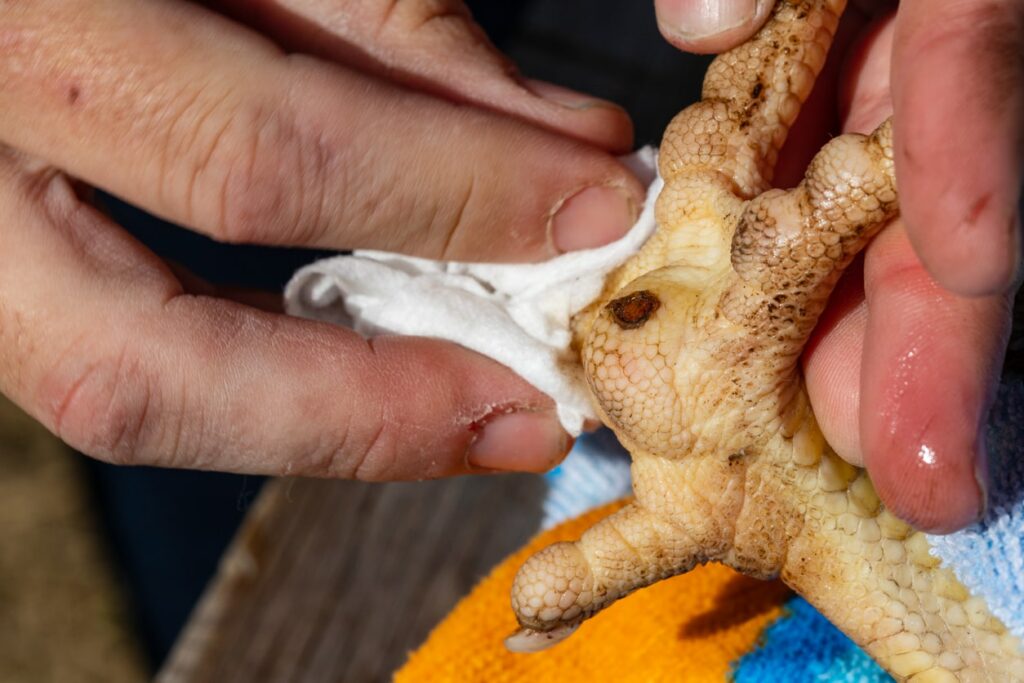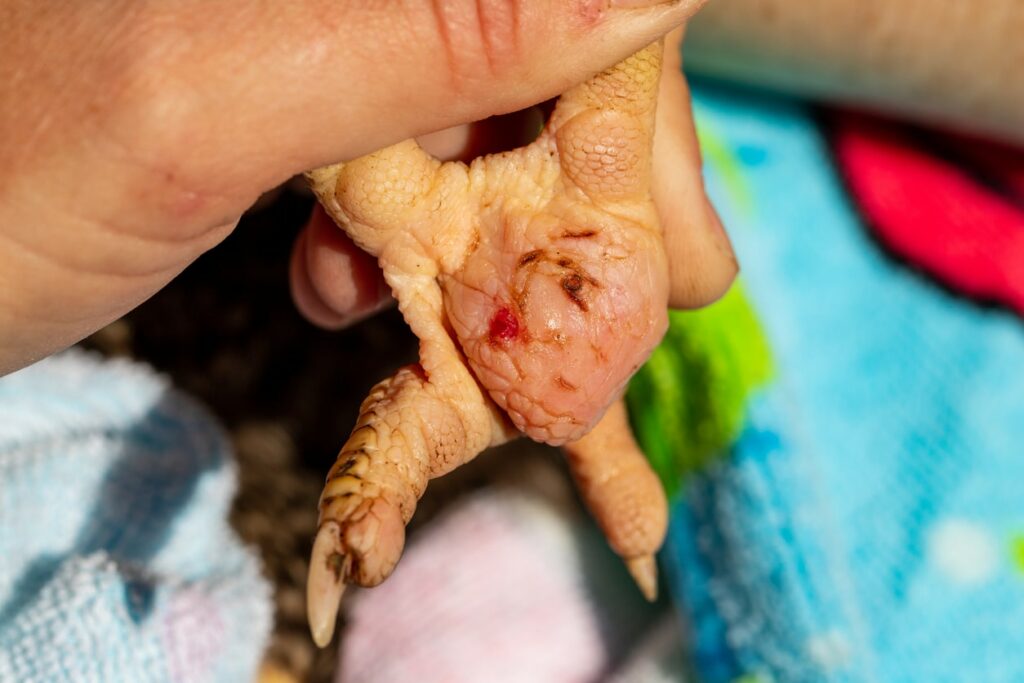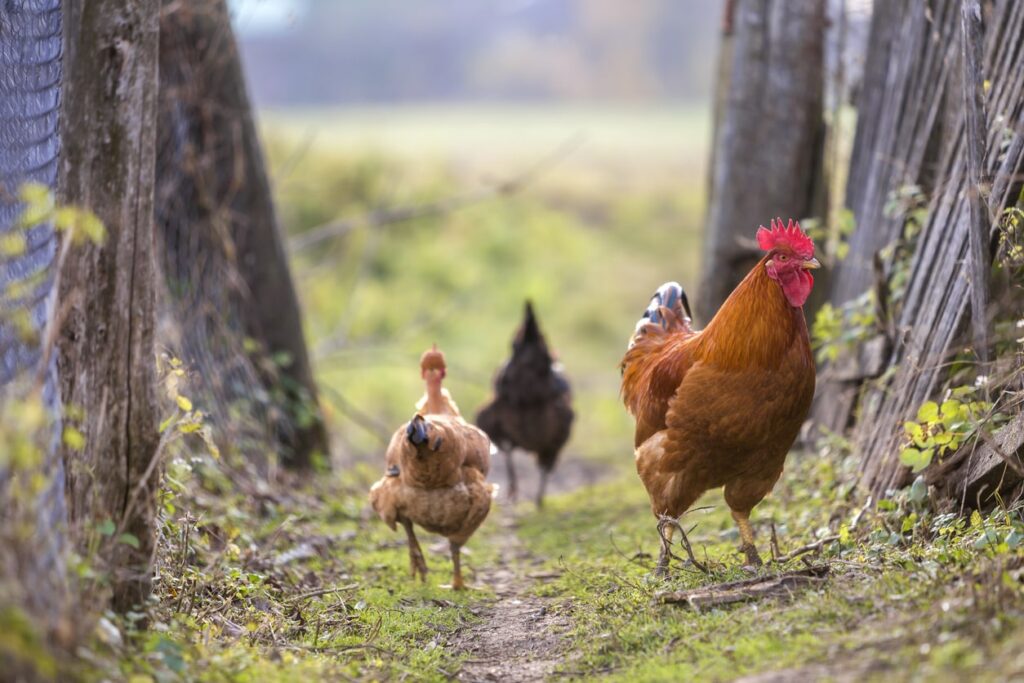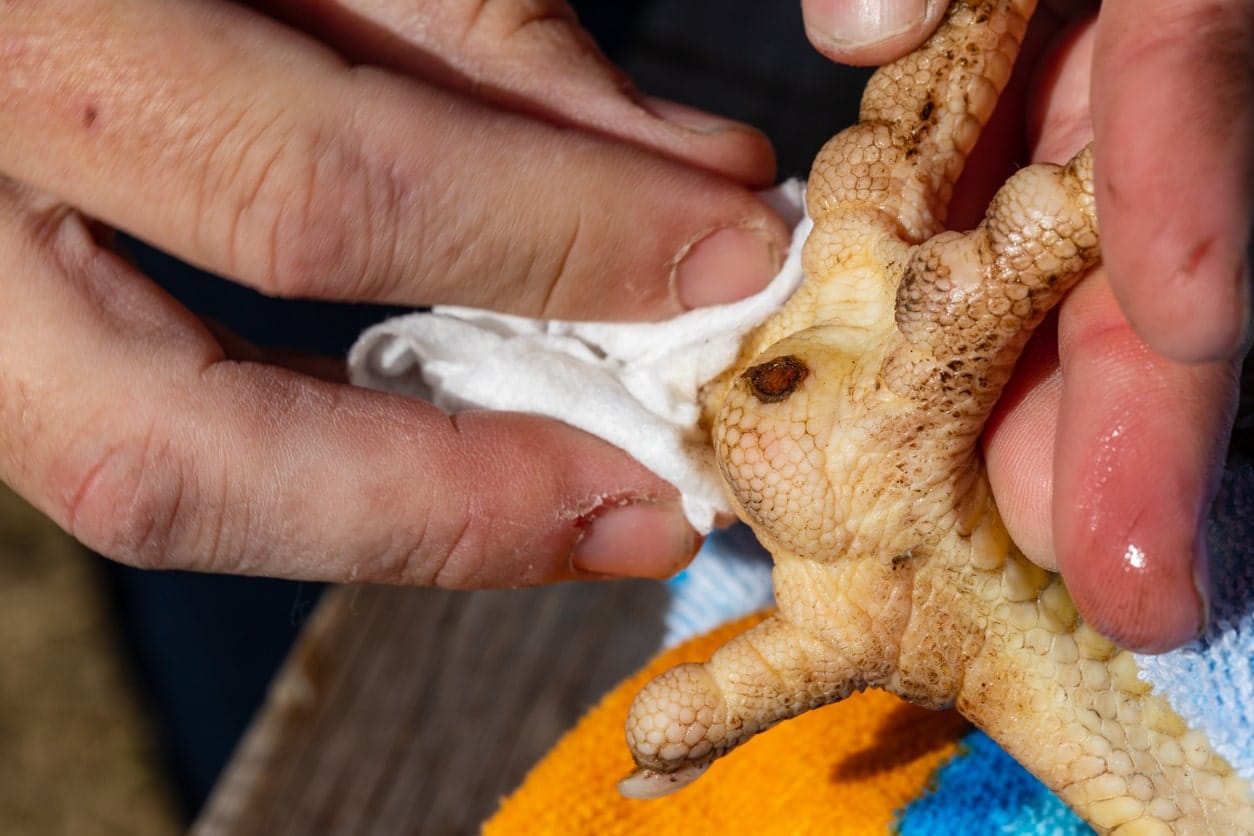Bumblefoot in chickens might sound silly, but it’s a serious disease that is fairly common. So, here’s what to look out for and how to treat it.
What is Bumblefoot in Chickens?

Bumblefoot goes by many names, including pododermatitis, footpad dermatitis, and foot pad ulcers. It’s an inflammatory condition that causes a hard bump with a black dot to appear on your chicken’s foot.
The larger the injury swells, the more painful and uncomfortable it will be for your bird. Some chickens might avoid walking on the affected foot if they have bumblefoot.
Bumblefoot doesn’t just affect chickens, it can happen to a wide range of animals, including rodents, bunnies, and other birds.
Stages of Bumblefoot in Chickens
Bumblefoot has five main stages, each with different appearances and concerns. Here’s how to spot each one:
- Grade I – There will only be subtle changes in the skin on the foot. There may be small, shiny pink spots or peeling skin. The average person probably won’t even notice these minor differences.
- Grade II – The smooth, shiny areas will stick out on the pads of one or both feet. A small black dot may start to form in the center.
- Grade III – The infection will be noticeably swollen and hot to the touch. The black spot will be large and hard to miss.
- Grade IV – If the wound is left untreated for a long time, the swollen area will cover most of the chicken’s foot pad. It will be extremely painful to the chicken and may prevent them from walking.
- Grade V – The wound will be massive with redness around the black area. If the chicken can walk, they will have an obvious limp and may avoid walking altogether.
Thus, if you see any unusual injuries on your chicken’s feet, don’t ignore them. Keep an eye on any abnormalities so you can spot bumblefoot before it affects your chicken’s mobility.
What Causes Bumblefoot in Chickens?

Bumblefoot in chickens is caused by bacteria, such as Staphylococcus pseudomonas, Staphylococcus aureus, or Escherichia coli. If your chicken has any cuts, wounds, or splinters on them, bacteria can get inside their body and infect their feet.
At first, you probably won’t notice anything unusual about your chicken. Their feet may be smooth or pink in some areas, but that doesn’t always mean they have bumblefoot.
The best way to tell if their feet are infected is to pay attention to their behaviors. If they have bumblefoot, they may avoid using that foot as much as possible. Check to see if they’re limping, resting more than usual, or avoiding perches. Their feet will usually feel hot too.
Bumblefoot Treatment Methods
Luckily, if bumblefoot is in its early stages, there are ways for you to treat it at home. Here are some methods to try:
- Soak the Foot – Fill a bowl with warm water and put Epsom salts or chlorhexidine solution in it. Soak your chicken’s foot in the solution for about 10 to 15 minutes. During this process, the hard, swollen part of the foot should soften and become more comfortable for your bird.
- Bandage the Wound – Wrap a bandage around the infected area of the foot using colloidal dressing, medical honey, or anything similar. Change the bandage regularly, and clean and dry the foot between each time. This process should encourage healing over time.
- Give Antibiotics – There are some antibiotics you can give your chicken to reduce pain and swelling in their foot. Cephalosporins, fluoroquinolones, lincomycin, and clindamycin are some common options, but ask your veterinarian for a more specific suggestion.
If you’ve tried these methods, but your chicken’s injury is staying the same or getting worse, then it’s time to turn to a professional. A vet may need to remove the bump through surgery. Your vet might be able to explain how to remove it on your own, but it’s best to get a professional’s advice first.
Can You Prevent Bumblefoot in Chickens?

It’s difficult to prevent bumblefoot in chickens, but it’s not impossible. You can start by removing any sharp objects from your chicken enclosure. Scrapes on the skin are the easiest way for dangerous bacteria to enter your chicken’s body, so pick up any thorns, sharp edges on perches, pointy rocks, or tools that are lying around. Cleaning the coop regularly can also help you avoid unwanted substances.
Conducting regular health check-ups can also help you notice a problem before it’s too late. Inspect your chicken’s feet once a month to look for any signs of injury. If you notice any physical concerns or chickens in your coop limping, it can’t hurt to ask the vet about it.
No matter how careful you are, there’s always a chance that your birds could get bumblefoot. So, it’s best to keep an eye on your chickens’ health and ensure that their enclosure stays clean and safe.
Final Thoughts
Bumblefoot in chickens is an unsightly condition that shouldn’t be ignored. If not treated in time, it could be painful, uncomfortable, and dangerous. So, take it seriously if you ever find something wrong with your chicken’s feet.
The sooner you treat bumblefoot, the less your chicken will have to suffer. The same goes for any unusual chicken behaviors that could be related to a health concern. It’s better to be safe than sorry with their well-being.
